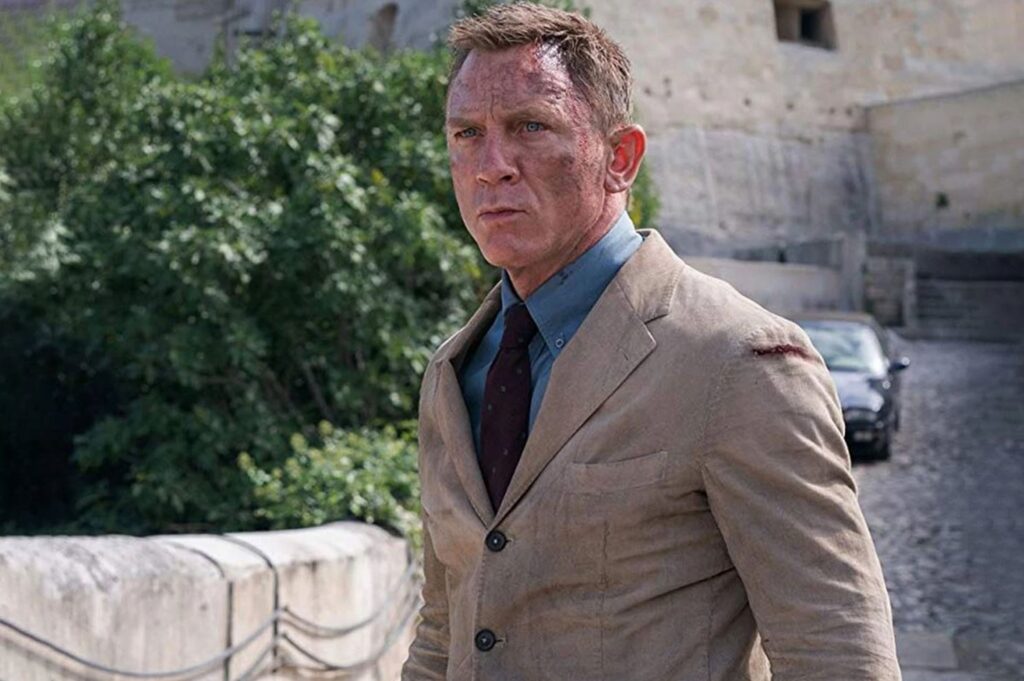
The pandemic may have delayed James Bond, but can James Bond defeat a pandemic? It’s a piece of unnerving cinematic kismet that No Time to Die, the fifth and final entry starring Daniel Craig as everyone’s favorite martini-drinking secret agent, finds the erstwhile 007 racing to stop the release of a deadly bioweapon. Originally set for release in April 2020 (ha!) before being postponed roughly 35 different times over the past 18 months, this latest depiction of Ian Fleming’s tuxedoed superspy has suffered gravely on its bumpy journey to the multiplex, so much so that its fictional threat—mass distribution of airborne toxins—seems both eerily prescient (the script was completed well before COVID-19’s arrival) and oddly quaint. When compared with widespread vaccine obstinacy, performative litigation over mask mandates, and right-wing disinformation campaigns, how dangerous can a single supervillain really be?
But nobody watches a James Bond flick for the plot; it’s the man with the golden puns we’re after. Every new 007 develops his own signature—the pithy charm of Sean Connery, the jocular cheese of Roger Moore, the arch distance of Pierce Brosnan—and the Craig era has been defined by a brooding intensity that mingles, sometimes productively and sometimes awkwardly, with an emotional vulnerability. The first blond Bond has always been a capable puncher and competent quipper, but his legacy is the sting of loss that lingers over his romantic entanglements; what were once male-gaze rituals of masculine conquest and feminine adoration became, in the new millennium, something resembling genuine, mutual relationships. As the capstone to Craig’s decade-and-a-half term of service in the role of 007, No Time to Die strives to marry the franchise’s more traditional elements—the gadgets and the globe-trotting, the brutes and the babes—with its newfound sensibility of heartache and regret.
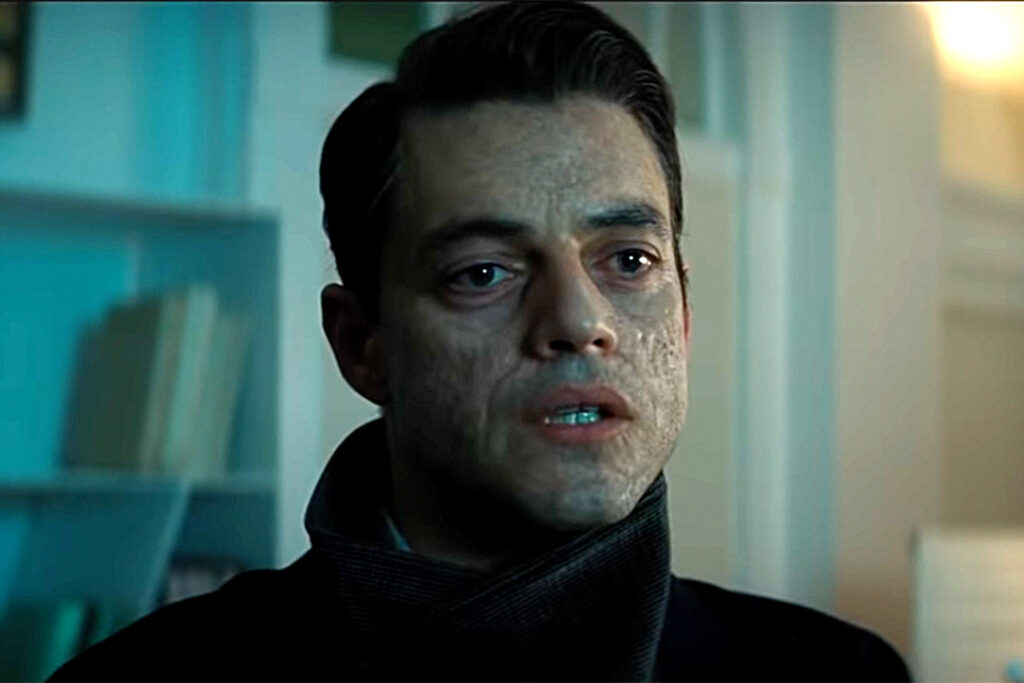
It doesn’t quite work. Directed by Cary Joji Fukunaga from a screenplay he wrote with Neal Purvis, Robert Wade, and Phoebe Waller-Bridge, the movie is an able piece of blockbuster entertainment, but it labors to sustain the momentum needed to justify its purported grandeur. Its emotional resonance, meanwhile, derives more from how it echoes the past than from anything it accomplishes in the present.
We’ll get to that. When we last left Bond, James Bond, he was cruising through Europe in his Aston Martin with his new flame, Madeleine Swann (Léa Seydoux), and ostensibly retiring from MI6. Naturally, we know better, and over the course of a mostly impressive, extravagantly long cold open—which actually begins with a flashback to Madeleine’s youth, revealing a traumatic event that she described in the prior installment, the diverting but misguided Spectre—he’s once again ensnared in a web of geopolitical intrigue and megalomaniacal chicanery. It’s a wild and kinetic sequence, complete with motorcycle jumps and improvised bungee-cord leaps, but its most memorable moment is one of relative stillness; as baddies riddle his bullet-resistant sports car with volleys of ammunition, a betrayed Bond sits and stews, impassive to the pleas of a distraught Madeleine, before he wearily decides, at long last, to return fire.
Fukunaga might have brought that level of patience to the remainder of his set pieces, which are by and large fast, loud, and chaotic. It’s a volume business—the runtime is 163 minutes, and speaking of volume, Hans Zimmer’s score liberally incorporates Monty Norman’s classic theme while adding his own modern bombast—so Fukunaga can’t help but imbue some of the many, many mayhem-filled sequences with filmmaking flair; a scene in a desolate wood pops for its atypical silence and spareness, while a bruising fight in a stairwell unfolds over a lengthy take, recalling some of the visual artistry he brought to the first season of True Detective. (There’s also a delightful homage to the iconic introductory shot of Bond pivoting and firing his pistol toward the audience in a cylindrical space, which doubles as a reminder that you should never watch trailers.) But most of the combat is boilerplate “kill the henchmen” shtick. Abandoning the smooth polish that Sam Mendes brought to Skyfall and Spectre, Fukunaga favors a more animalistic ferocity, an approach that may dovetail thematically with the character but which nonetheless results in long, leaden scenes of Bond blasting his machine gun and sending countless goons to meaningless deaths.
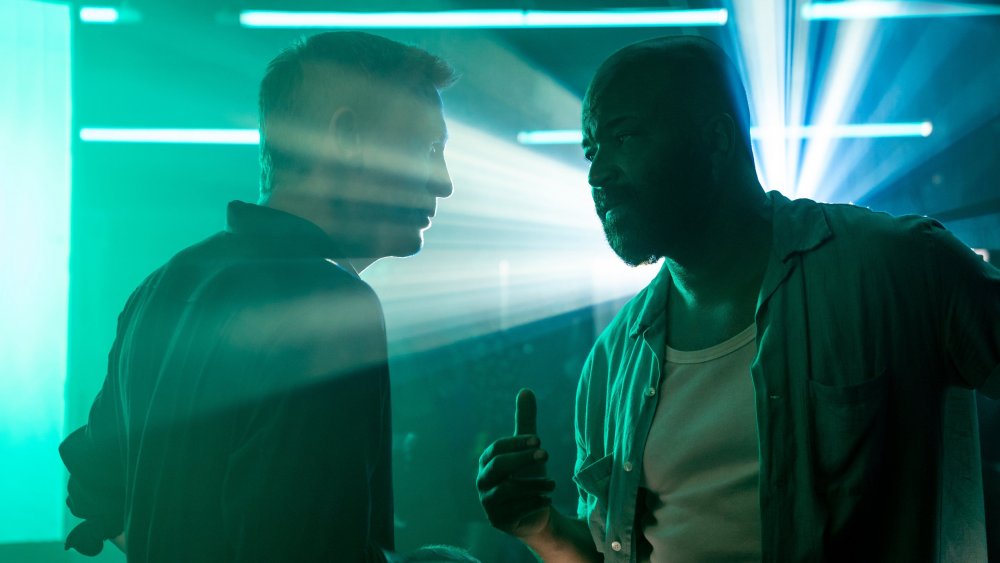
Still, even if No Time to Die falters as an action extravaganza, it’s quite satisfying as an ensemble picture. One of the pleasures of each new iteration of 007 is how the producers round out and reshape his cohort, putting a new spin on preexisting archetypes. And so, the great Jeffrey Wright returns as CIA’s Felix Leiter, lending American rascality to a production suffused with upper-crust Britishness. Back at MI6, Bond spars with M (Ralph Fiennes), flirts with Moneypenny (Naomie Harris), and, most delightfully, gets on the nerves of Q (Ben Whishaw); each of those parentheticals identifies a terrific actor, and over the course of three films they’ve each honed their collective rapport with Craig, generating a chemistry that combines annoyance, resignation, and sincere loyalty.
The new faces are pretty great, too. Lashana Lynch, flashing far more spark here than she did as Brie Larson’s sidekick in Captain Marvel, shines as Nomi, Bond’s appealingly spiky replacement at MI6 who’s all too eager to point out his advanced age (and to flaunt a particularly relevant codename in his face). The clear standout, however, is Ana de Armas as Paloma, a cheerful operative who breezes into the movie in a slinky black cocktail dress and immediately injects it with a jolt of charisma. Paloma isn’t long on screen, but de Armas practically pops off it, displaying a natural vivacity that meshes perfectly with Craig’s veteran stability; when he bids her farewell with the line, “I hope to see you again,” he’s speaking for all of us.
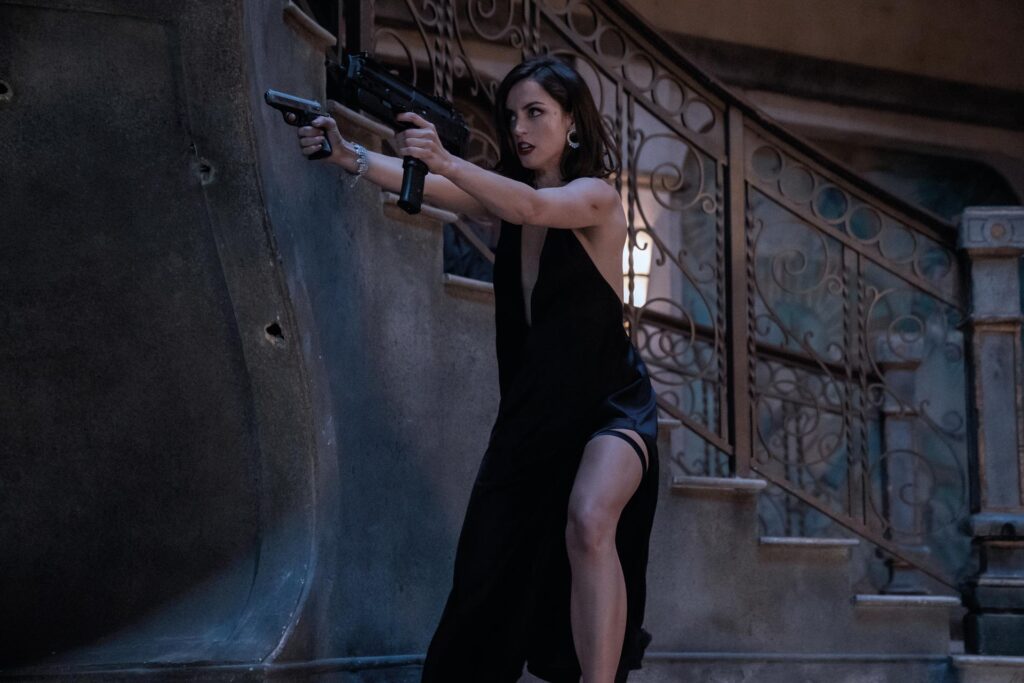
Alas, the villains aren’t nearly as good company. Christoph Waltz briefly returns as Ernst Stavro Blofeld, again underplaying the part to the point of somnambulance; it remains baffling that such a gifted showman in other cinematic universes can be so dully replaceable in this one. Rami Malek fares a bit better as Lyutsifer Safin, one of those insanely far-reaching big bads who holes up in a cavernous island lair, where an army of servile scientists methodically implement his deranged scheme for global devastation. Malek’s sibilant whispers carry a hint of genuine menace, but it’s hard to shake the feeling that we’ve seen this lunatic before, a point the film seems to acknowledge; when Bond denigrates Safin as just another product in a stock assembly of “angry little men”, it’s less a cutting remark than a dispiritingly accurate judgment.
Which isn’t necessarily fatal. Yes, No Time to Die’s execution of its familiar scenario of ticking-clock annihilation is more dutiful than exciting, but its primary ambitions are more intimate. Where Spectre unwisely sought to position Blofeld as the apex of Bond’s recent antagonists, this swan song seeks to function as the crest of our hero’s romantic aspirations. Madeleine, the film posits, is his true soul mate, and his customary struggles to save the world are secondary (and perhaps antithetical) to his enduring quest for happiness and peace.
It’s a sensible enough conceit in theory. The problem is that No Time to Die axiomatically can’t be the movie that at long last articulates James Bond’s capacity for love, because that movie already exists. In other words, the film’s great flaw is simple: It doesn’t star Eva Green.
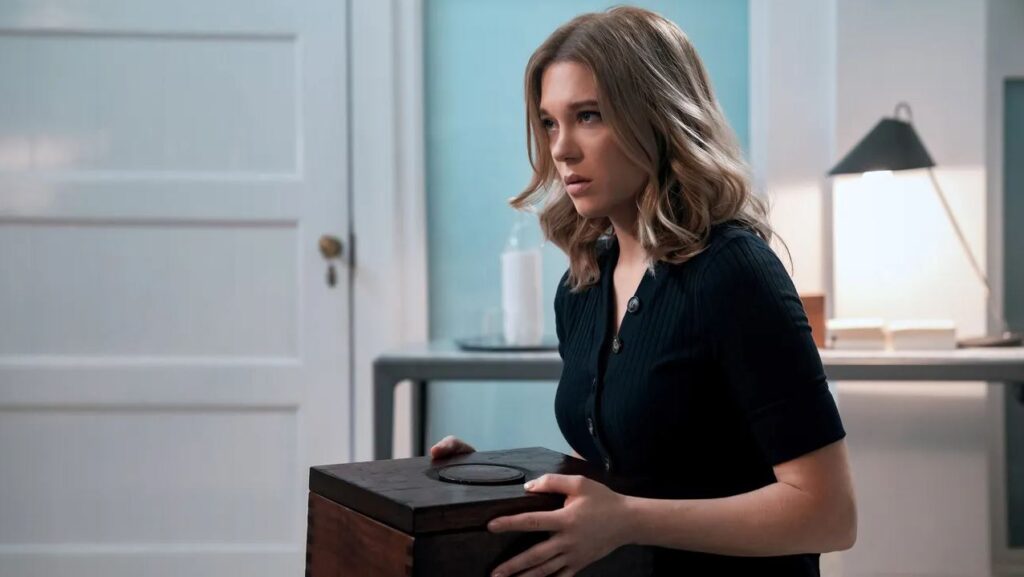
Green, you’ll recall, stole the show as Vesper Lynd in Casino Royale, which was Craig’s inaugural stint as 007 and which remains, at least for this critic’s money, comfortably the best Bond film ever made. Part of the shock of that picture was its suggestion, conveyed with emphatic tenderness, that James Bond could be a flesh-and-blood person as well as a superspy. Green’s performance was so achingly heartfelt, it infected every subsequent “Bond girl” by comparison; no disrespect to Olga Kurylenko, but her wounded avenger in Quantum of Solace may as well have been named Not Vesper Lynd. (Skyfall evaded this trap by scarcely featuring a Bond girl at all.)
I’m not suggesting that future Bond installments shouldn’t bother trying to explore actual relationships for the character; hell, 007 already fell legitimately in love once before—with Diana Rigg in On Her Majesty’s Secret Service, the 1969 landmark that No Time to Die consciously quotes by integrating strains of Louis Armstrong’s “We Have All the Time in the World” into its score. But whether it’s a matter of temporal proximity or emotional authenticity, the (ahem) bond between James and Madeleine never achieves the power that the script so strenuously demands of it. It seems both fitting and foolish that an early sequence finds Bond visiting Vesper’s grave, a testament not only to his undying longing for her, but also to the giant shadow that Green continues to cast over the franchise. Craig and Seydoux pantomime their affections well enough, but the scenes where they forthrightly acknowledge their abiding connection—moments which should be overwhelming in their sincerity—feel like intimations of love rather than the real deal.
And yet, despite its failure to work as a romance (much less an actioner), No Time to Die nevertheless acquires a certain poignancy in its final passages. This stems less from the specific talents of Fukunaga and his crew than from the accumulated fondness that comes from watching an actor and character evolve over the course of 15 years. Casino Royale is the only Craig entry that I’d classify as a truly great movie, and I wouldn’t deem him an especially great performer (though he’s always solid), but here, when he says “I love you” directly into the camera, I found myself wishing I could reciprocate the message. He did good work for us, and I’m in no hurry to see him replaced. That’s inevitable, and not just because No Time to Die concludes with the standard declaration, “James Bond will return”; a blockbuster property this lucrative doesn’t just evaporate. But when it comes to rebooting this enduring, enjoyable franchise yet again, the producers should feel free to take all the time in the world.
Grade: B-
Jeremy Beck is the editor-in-chief of MovieManifesto. He watches more movies and television than he probably should.

I thoroughly enjoyed your review Jeremy and agree with your grade. Personally, I didn’t feel enough emotional impact during the film’s climax, especially given the gravity of what was happening. And as someone who loves the entire franchise I thought that so many bold plot choices (namely the deaths of multiple venerable characters) to be somewhat disrespectful to the other films. Nevertheless, it was nice to sit and watch 2.5hrs of Bond in a cinema after such a long drought. Hope all is well, Matt
Thanks, Matt! Sounds like we’re on the same page. Certainly lacking in emotional gravity, especially compared to Casino Royale (or even Skyfall), but an enjoyable sit nonetheless.